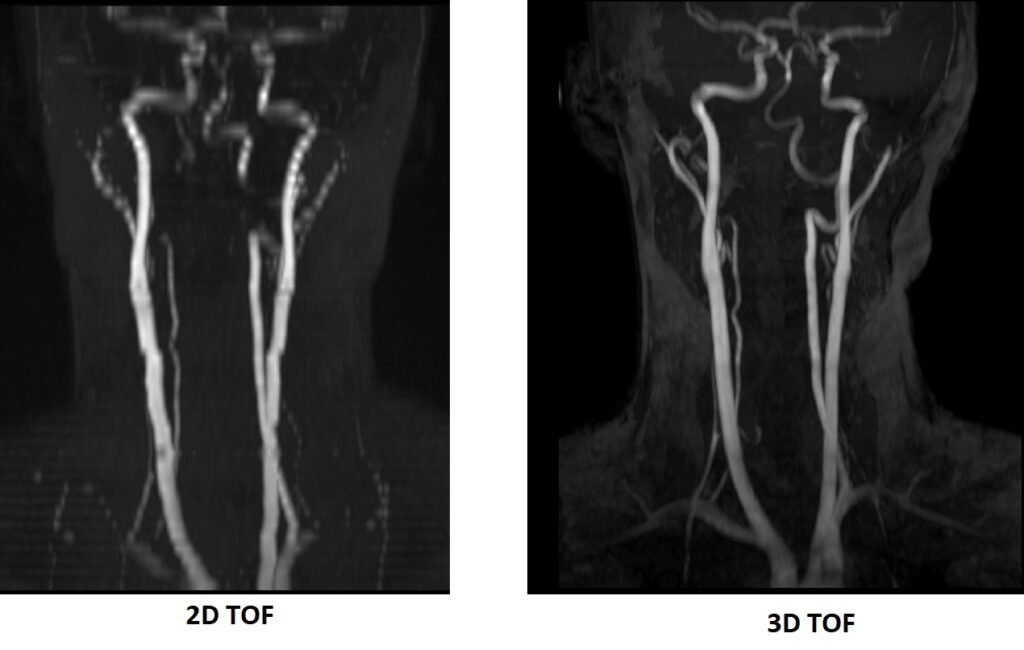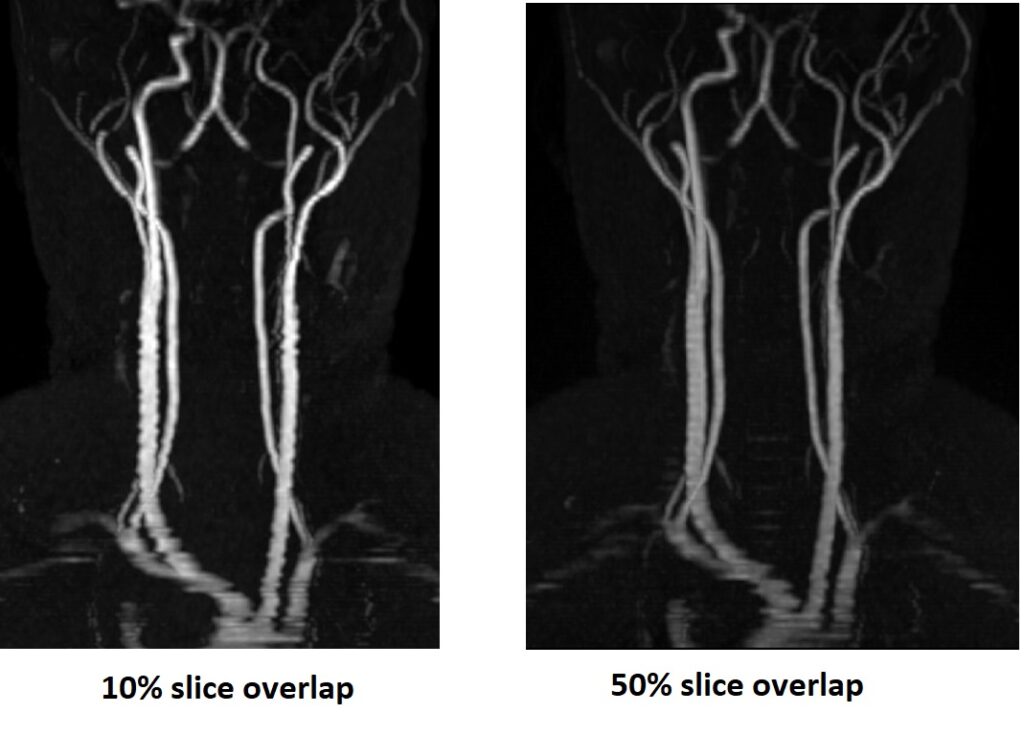MRI Stair-Step Artifact in 2D Time-of-Flight (TOF)
The stair-step artifact is a specific artifact that can occur in 2D Time-of-Flight (TOF) magnetic resonance imaging (MRI). It manifests as a series of step-like or stairstep patterns in the image, particularly in the phase-encode direction.
The stair-step artifact arises due to the flow-related signal loss phenomenon in 2D TOF imaging. In this technique, blood flow in vessels perpendicular to the imaging plane can create phase differences between stationary tissue and flowing blood. When the imaging plane is not perfectly aligned with the direction of blood flow, these phase differences can cause partial cancellation of the flowing blood signal, leading to dark bands or stairstep patterns.
The effect on the image is the appearance of alternating dark and bright bands that follow the vessel orientation, resembling a series of steps. This artifact is more commonly observed in large vessels, such as the carotid arteries or Aorta.

Here are some strategies to minimize or avoid stair-step artifact :
Thinner Slices: Using thinner slices can help improve the in-plane spatial resolution and reduce the stair-step artifact. Thinner slices allow for better visualization of fine structures and vessels, minimizing the pixelated appearance.

Use 3D TOF instead of 2D: Stair-step artifacts in MRI can be effectively reduced or eliminated by using 3D TOF (Time-of-Flight) imaging techniques

Overlapping Slices: Overlapping adjacent slices can help minimize stair-step artifacts. By acquiring additional slices with overlapping coverage, the stair-step appearance is reduced as the information from neighboring slices helps fill in the gaps.

Motion Reduction: Instructing the patient to avoid swallowing or moving during the scan is essential. Patient motion, even subtle movements, can introduce artifacts. Using patient immobilization devices or techniques, such as breath-holding or gating, can also help minimize motion-related artifacts.

References:
- Kaufman JA, McCarter D, Geller SC, Waltman AC. Two dimensional time-of-flight MR angiography of the lower extremities: artifacts and pitfalls. AJR Am J Roentgenol 1998; 171:129-135.
- Song, J. W. (2021). Flow-Related Artifacts and Pitfalls in Magnetic Resonance Imaging/Angiography in Neuroradiology.
